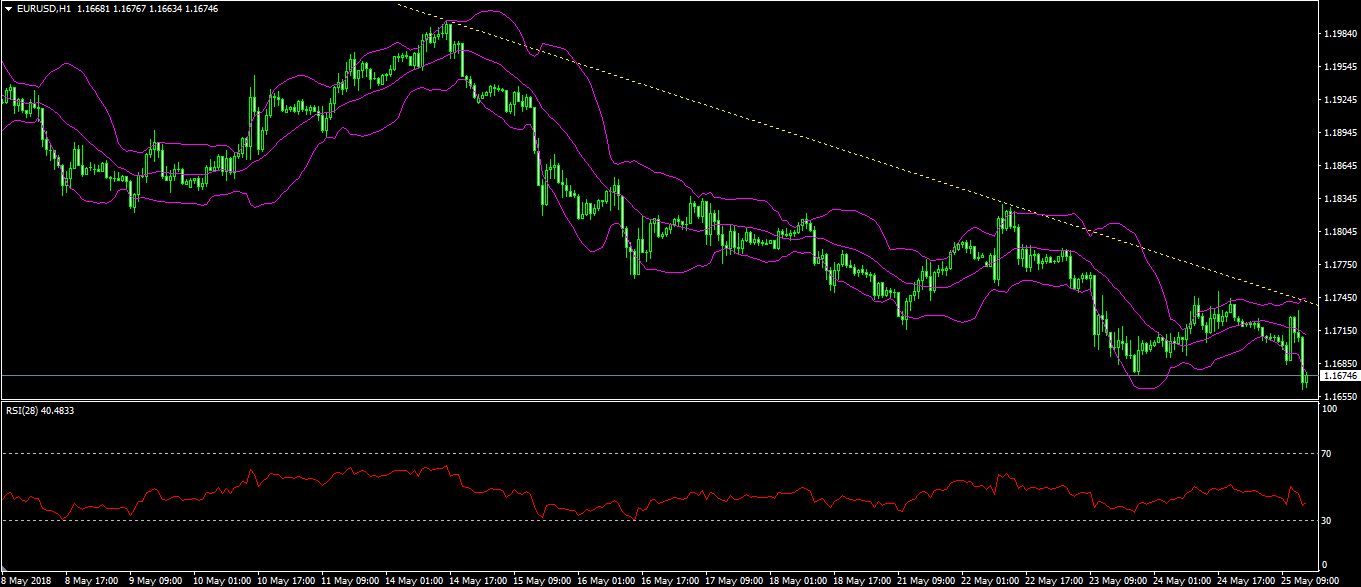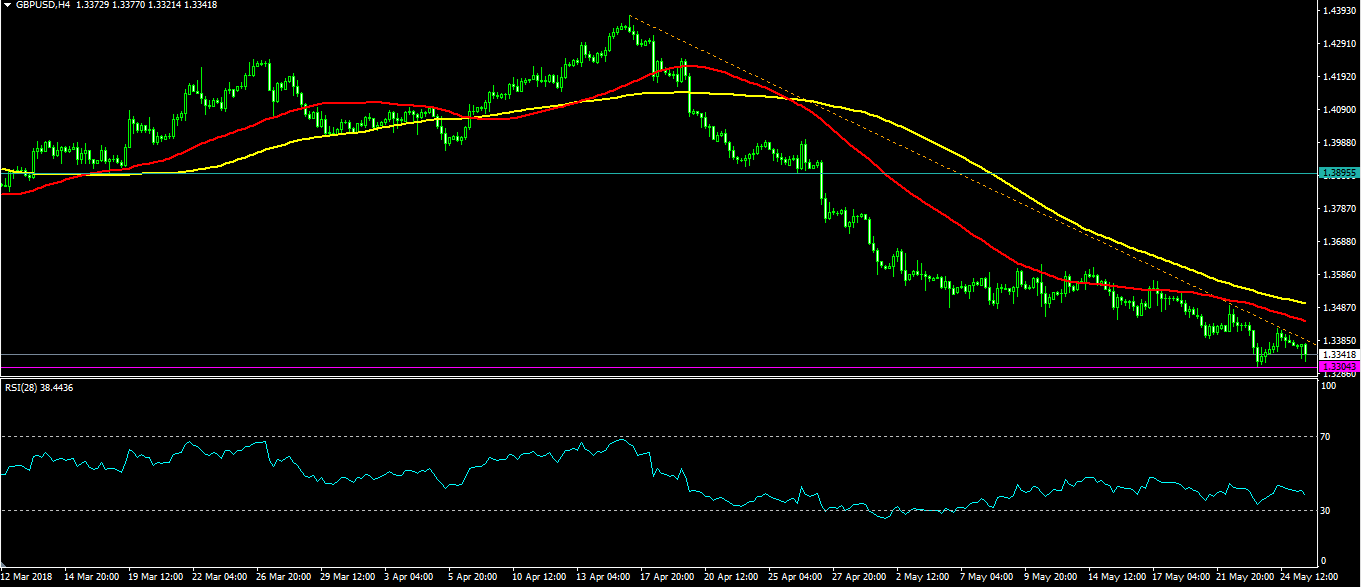The euro dropped against the dollar today after data from IFO showed a slow increase in the business climate in Germany. The data showed that the country’s climate rose to 102.2, which was higher than last month’s 102.1 and lower than the expected 102.7. This indicator has been declining since January when it reached 117.6. The decline is associated with the new era of trade which was introduced by Donald Trump. He started by placing tariffs on steel and aluminum and on Wednesday, he asked the commerce department to launch a probe on vehicle imports. Analysis by IFO shows that tariffs on German cars would cost the German economy more than 5 billion euros annually.
The US dollar continued weakening against the Japanese Yen after Donald Trump announced that he would not participate in the meeting with North Korea. The decision came after North Korea threatened to call off the meeting because of statements made by Vice President Mike Pence and John Bolton. Increased tensions in the Korean peninsula is usually bullish for the Japanese Yen, which many investors rush to as a safe haven. The yen is considered a safe haven because of the vast holdings Japan holds overseas. For example, it is the second largest holder of US treasuries after China.
The UK pound fell slightly after the Office of National Statistics (ONS) released GDP numbers. The preliminary Q1 data showed that the country’s economy expanded by 0.1% in the quarter at an annual rate of 1.2%. This was unchanged from the Q4 data released a month ago. The business investment in the country contracted by negative 0.2%, which was lower than the expected growth of 0.2%. On an annual basis, investment rose by 2.0%, which was lower than the expected 2.4%. This could be attributed to the ongoing challenges on the Brexit negotiations.
The EUR/USD pair fell to an intraday low of 1.1670, which is the lowest level since November last year. The pair is now trading at 1.1665, which is lower than the 25 and 50-day moving average. The price is at the lower band of the Bollinger bands as shown below. This means that the pair could move higher, to test the middle band at 1.1715.
GBP/USD
The GBP/USD reached a peak of 1.4373 on April 20. Since then, the pair has dropped to the low of 1.3304, which is the lowest level since December 12. It is now trading below the 50 and 100-day moving average. Its RSI is trading sideways and is currently at 38. At this point, the pair could move in either direction. A move lower could see it test the 1.3052 level while moves higher could see it test the 1.3627 support.
In April, the USD/JPY pair reached 104.6, which was the lowest level since January last year. Since then, the pair has recovered some of the losses and is currently trading at 109.39. Yesterday, the pair crossed the important support which is shown below. This happened mostly because of the North Korea issue. The pair is trading below the 25 and 50-day moving average. It is likely that the pair could recover some of the losses as evidenced by the Parabolic SAR indicator below. It is confirmed by the moving average of oscillator indicator which is shown below.
General Risk Warning for FX & CFD Trading. FX & CFDs are leveraged products. Trading in FX & CFDs related to foreign exchange, commodities, financial indices and other underlying variables, carry a high level of risk and can result in the loss of all of your investment. As such, FX & CFDs may not be appropriate for all investors. You should not invest money that you cannot afford to lose. Before deciding to trade, you should become aware of all the risks associated with FX & CFD trading, and seek advice from an independent and suitably licensed financial advisor. Under no circumstances shall we have any liability to any person or entity for (a) any loss or damage in whole or part caused by, resulting from, or relating to any transactions related to FX or CFDs or (b) any direct, indirect, special, consequential or incidental damages whatsoever.
Recommended Content
Editors’ Picks
GBP/USD stays below 1.2450 after UK employment data

GBP/USD trades marginally lower on the day below 1.2450 in the early European session on Tuesday. The data from the UK showed that the ILO Unemployment Rate in February rose to 4.2% from 4%, weighing on Pound Sterling.
EUR/USD steadies above 1.0600, awaits German ZEW and Powell speech

EUR/USD is holding above 1.0600 in the European morning on Tuesday, having hit fresh five-month lows. The pair draws support from sluggish US Treasury bond yields but the rebound appears capped amid a stronger US Dollar and risk-aversion. Germany's ZEW survey and Powell awaited.
Gold price holds steady below $2,400 mark, bullish potential seems intact

Gold price oscillates in a narrow band on Tuesday and remains close to the all-time peak. The worsening Middle East crisis weighs on investors’ sentiment and benefits the metal. Reduced Fed rate cut bets lift the USD to a fresh YTD top and cap gains for the XAU/USD.
SOL primed for a breakout as it completes a rounding bottom pattern

Solana price has conformed to the broader market crash, following in the steps of Bitcoin price that remains in the red below the $65,000 threshold. For SOL, however, the sensational altcoin could have a big move in store.
Key economic and earnings releases to watch

The market’s focus may be on geopolitical issues at the start of this week, but there is a large amount of economic data and more earnings releases to digest in the coming days.


